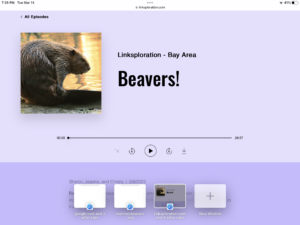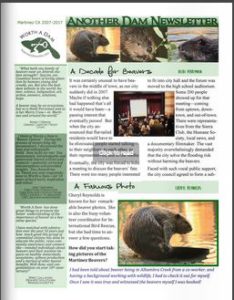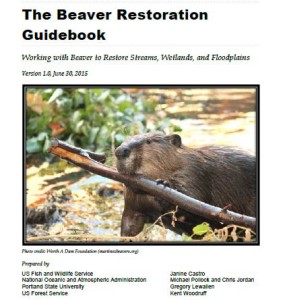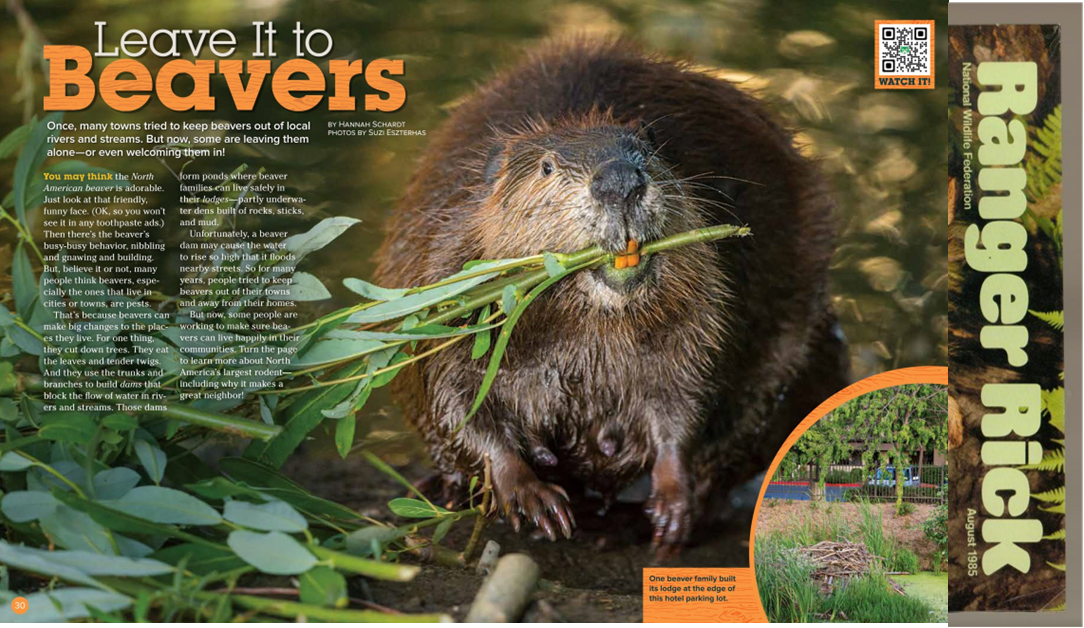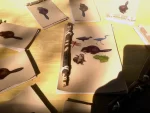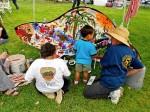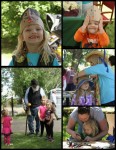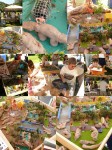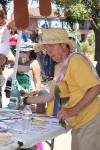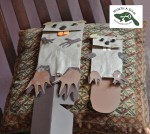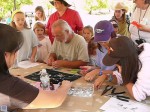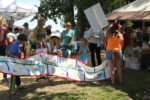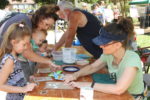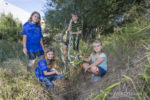 Yesterday was an unbelievably delightful and challenging journey through the year’s accumulation of goodies getting everything ready for today’s meeting with Leslie and Deidre for the important ‘bagging and tagging’ of items for the silent auction. We were reminded how many, many unbelievable treasures we received courtesy of enormously generous souls from as far away as Rhode Island, Kent, Calgary and Melbourne. Here is our small and precious collection of beaver jewelry which we were eager to display. This year we were given less jewelry and more art. Far more. There are 38 stunningly creative images this year in the auction, with everything from beaver ballerinas to otter notepads and avocets in flight.
Yesterday was an unbelievably delightful and challenging journey through the year’s accumulation of goodies getting everything ready for today’s meeting with Leslie and Deidre for the important ‘bagging and tagging’ of items for the silent auction. We were reminded how many, many unbelievable treasures we received courtesy of enormously generous souls from as far away as Rhode Island, Kent, Calgary and Melbourne. Here is our small and precious collection of beaver jewelry which we were eager to display. This year we were given less jewelry and more art. Far more. There are 38 stunningly creative images this year in the auction, with everything from beaver ballerinas to otter notepads and avocets in flight.
The hardest job of pulling and sequencing is done. Believe me when I say some colorful language was spoken yesterday. Today will be reviewing, oohing and ahhing, and sticking numbers on items. 89 in total. Not bad for a beaver charity!
In the meantime there is PLENTY of good news this sunday, starting with a fairytail report from Calgary where folks are protesting the removal of a beaver dam and subsequent loss of habitat because of a proposed road building. I like every single thing about this story, but especially the name of the town, which sounded almost like candid camera was trying to see how I’d react.
Construction of southwest ring road will destroy popular beaver pond, protesters say
Protestors concerned about wildlife habitat loss due to construction of the southwest ring road led a walk to a popular beaver pond in the Weaselhead area Saturday.
The biggest issue is the realignment of the Elbow River and construction of a bridge overtop, which could mean the loss of a popular beaver pond, said Diane Stinson, a bird watcher who regularly frequents the area in the southwest corner of Calgary.
“They’ve proposed to fill in 24 wetlands between Highway 8 and Highway 22X,” she said.
“Four of those wetlands directly impact the beaver pond and the beaver pond is a local treasure. People go there all the time to see the wildlife and if the wetlands are filled in as the contractor has applied, the beaver pond will cease to exist.”
Ahh the chills up my spine when I read a sentence like that! You can’t imagine. Or when I see a photo like this:

“People are obviously concerned,” he said during Saturday’s protest organized by the group, YYC Cares. “Any damage that might happen to any wildlands, we compensate it three-to-one. We work with Ducks Unlimited and other organizations.
“In the original plan, our project would have come much closer to the beaver pond, but we’ve actually moved the road and changed the plan, so we’re going to have a pretty wide buffer between the two.” Johnson said trees and other vegetation will also be planted to strengthen the buffer between the road and beaver pond.
That’s right. We work with Duck Hunters to trade the destruction of habitat by our bulldozers for some more wetlands for duck hunters. That seems fair, right?
The $1.42 billion southwest ring road project will link Highway 8 with Highway 22X and is slated to be completed in the fall of 2018. The resident group has also filed letters with the province’s Environmental Appeals Board about the design, without success.
“We’ve had two different levels of appeal and our first appeal was dismissed,” Stinson said. “We just heard [Friday] that our second appeal was rejected. They’re saying we’re not directly affected by this.” The style of bridge being used to cross the Elbow River is also a problem for some members of YYC Cares.
“We were never aware until just recently that instead of an open-span bridge like Stoney Trail in the northwest, this is a cut-and-fill earth and berm dam,” Stinson said.
Something tells me there’s a reason you weren’t informed about this, Stinson.
Founded in 1965 by Grant MacEwan, the Weaselhead is one of three protected parks in Calgary — the other two being the Inglewood Bird Sanctuary and Griffith Woods Park. The Weaselhead is a source of Calgary’s drinking water and is “incredibly biodiverse,” said Paul Finkleman, president of the Weaselhead Preservation Society.
“We at the Weaselhead Society call it Calgary’s largest outdoor classroom,” he said.
“We have thousands and thousands of kids every year learning about water ecology, forest ecology, water biology and environmental stewardship. It’s just such a wonderful place, not just for families to enjoy, but for children to learn… right within city limits.”
Thousands of children, and some very wealthy-looking protestors. My odds are on the beaver dam. Great work friends of the beaver pond! You have all our support and spirit! Send your happy thoughts to the plucky folks of WEASELHEAD which, in addition to being the kind of name a newspaper loves to write over and over, is also about 3 hours over the border from Montana.

There are two more prizes this sunday, the first will be adored by all, and the second might mean nothing to anyone but me. Here’s the first, which was posted on my FB page by beaver buddy Lee Lawrence of Oregon. No back story provided, but honestly, none needed.
 There are cute babies an there are oh-my-god-I-wanna-die cute babies. And I believe you know how I would classify this one.
There are cute babies an there are oh-my-god-I-wanna-die cute babies. And I believe you know how I would classify this one.
Now onto the Heidi amusement, which comes because I stumbled across this nursery rhyme in the context of our current presidential administration. Everyone knows the first line but few remember the poem it comes from.
Birds of a feather, Flock Together
And so do pigs and swine
Rats and mice shall have their choice
And so will I have mine.
There were two things that struck me about this jingle. The first was that it should obviously be about beavers, which I’ll get to later. The second was that its rhyme is SO off. Obviously there’s an internal rhyme scheme in the first line with feather and together, but what happens to that in line three? In what crazy world do ‘mice’ and ‘choice’ rhyme?
Jon and I brainstormed a bit about this mystery and he thought there was a chancethey rhymed in the Cornish dialect. So of course I marched straight to beaver expert Derek Gow and asked him. Guess what he said?
“Here in Devon and Cornwall there is a tendency to pronounce things like mice as moice. Same applies to the other words so maybe the connection is there.”
Ah HA! Mystery solved! Rats and Moise will have their Choice! Heh heh heh…Thank you, Derek! Now for the other problem.
Birds of a feather, flock together
Both closely and beyond
Bugs, frogs and fish, are all they wish
Beside a beaver pond.
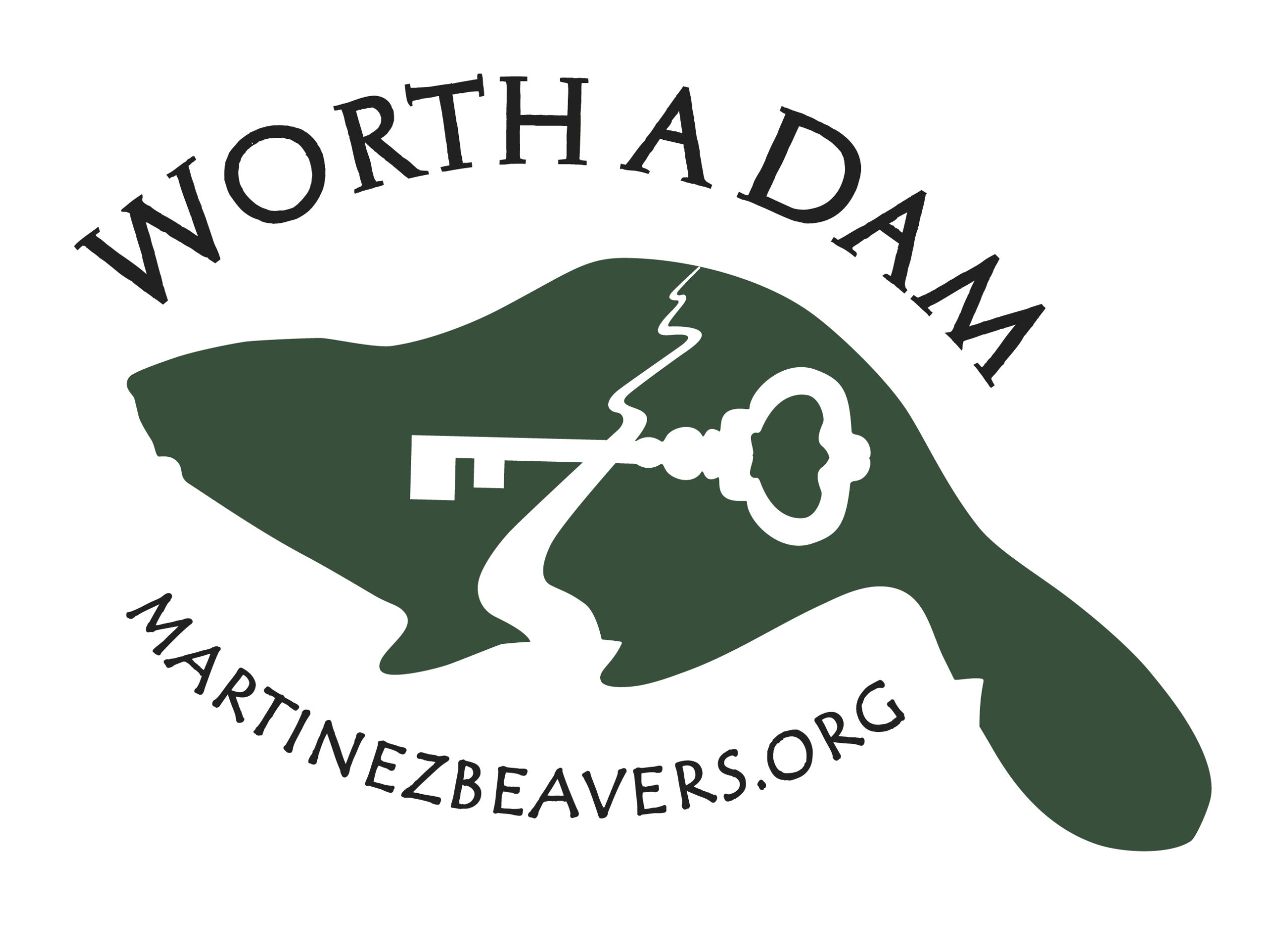



 Beaver ponds store a lot of water. Millions of gallons. And scientists are now realizing that reintroducing the animals to struggling streams is a way to buck a drying trend. This Filson Life is part of Filson’s celebration of the Forest Service and the people of the Pacific Northwest Region of the USFS, Region 6.
Beaver ponds store a lot of water. Millions of gallons. And scientists are now realizing that reintroducing the animals to struggling streams is a way to buck a drying trend. This Filson Life is part of Filson’s celebration of the Forest Service and the people of the Pacific Northwest Region of the USFS, Region 6.  “One of the things we know is that beavers improve streams,” says Woodruff, a beaver biologist with the Forest Service. “Beavers make things better by adding complexity to streams to enhance everything that needs to happen out there.”
“One of the things we know is that beavers improve streams,” says Woodruff, a beaver biologist with the Forest Service. “Beavers make things better by adding complexity to streams to enhance everything that needs to happen out there.” After trapping a problem beaver, Woodruff temporarily keeps it at an old fish hatchery that he’s set up with beaver homes. He’s found that relocating beavers is best done with male-female pairs, and he waits until he traps a beaver of the opposite sex before pairing the two at the fish hatchery. He then transplants the pair—with a bundle of sticks and willow switches they’ve been chewing at the hatchery—to a suitable, beaver-free stream in the forest.
After trapping a problem beaver, Woodruff temporarily keeps it at an old fish hatchery that he’s set up with beaver homes. He’s found that relocating beavers is best done with male-female pairs, and he waits until he traps a beaver of the opposite sex before pairing the two at the fish hatchery. He then transplants the pair—with a bundle of sticks and willow switches they’ve been chewing at the hatchery—to a suitable, beaver-free stream in the forest.



